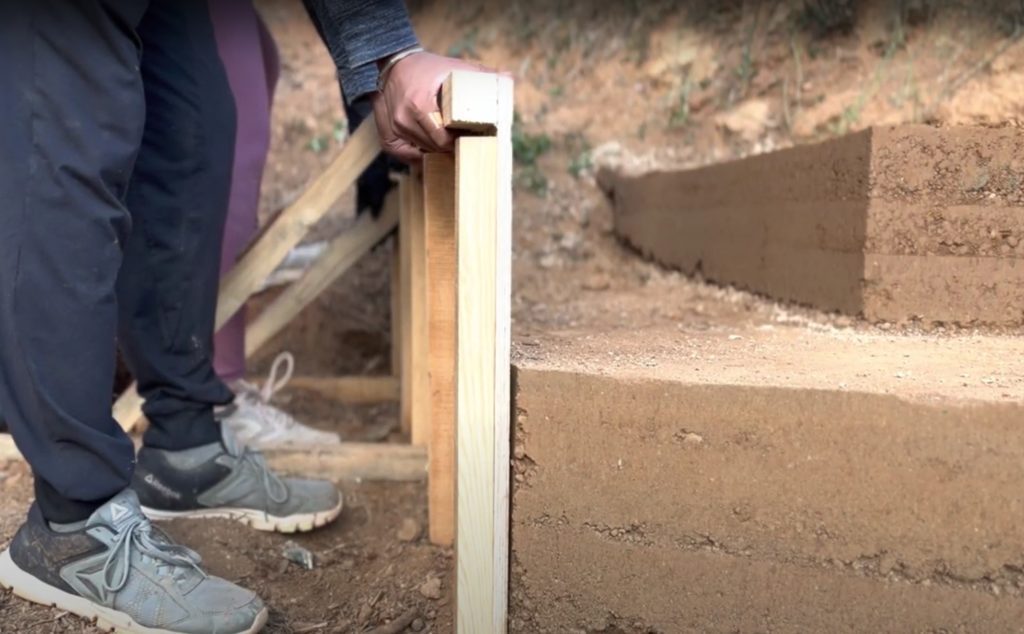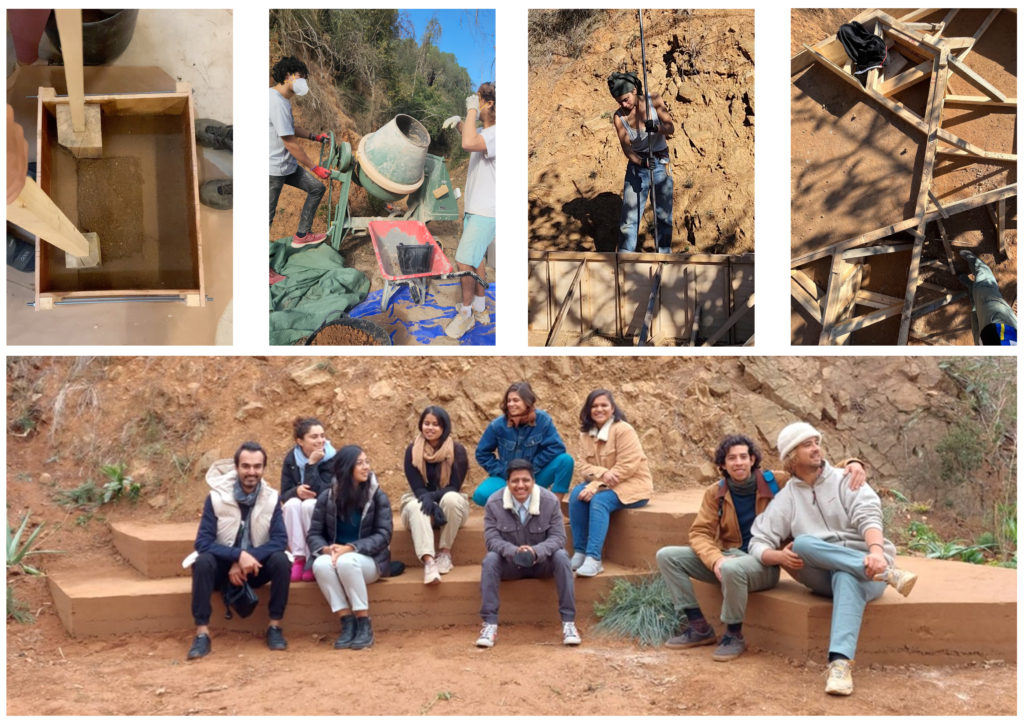BRIEF
Public spaces in the city of Barcelona play a vital role in the daily lives of its citizens. But often there is a clear boundary seen between the urban and the periurban forests of the city. The project approaches the site of Font Del Gos as a transitory space between the city of Barcelona and the regional park of Collserola. This space breaks the disparity and allows for an organic transition from city to nature.
The site with its historical and close proximity to the forest had to be addressed with utmost sensitivity and respect. As a group, we initiated with the question, how can a traditional and ancient technique be transformed and challenged through advanced digital fabrication techniques? This led to the decision to make a rammed earth structure, a structure that blended seamlessly into the existing landscape and over the span of the next few years could disintegrate back into the ground, leaving the land untouched and unharmed.

SITE ANALYSIS
The site study included inspecting the local topography of the area consisting of earth enriched with clay, in a dry landscape that hosts plants ranging from fennel, rosemary and fig trees, we concluded on creating a rammed earth topographic bench adapted to the hillside. Considering this specific location as a transition between the urban and the natural, we initiated our design process for this landscape project considering fractals’ logic of a pattern that repeats itself in different scales as our main reference. Fractals are a perfect example of a system found everywhere in the universe, from the branching of trees to the tiny branching of our blood vessels; A unifying system for the city and the forest. We concluded with an asymmetric and geometric fractal design using hexagons as our leading shape to create a shape that responded and adapted itself to the existing landscape. The hexagon pattern mirrors the hill and is complexified in every one of the three levels of the landscape bench, concluding in three different scales of hexagons in our design varying between 60, 90 and 120 cm in length.

IMPLEMENTATION
The process began with several prototypes testing both the ramming process and the framework. This was simultaneously done while exploring shape-finding which was supported by the softwares Rhinocerous3D and Grasshopper, while the materiality respected its tradition; 60% of clay-based earth, 30% of fine sand and 10% of lime.
After the design of the topography was finalised, the construction began on the framework for the 3 layers. These were done in a kit of parts which was transported to the site where it was later assembled.



Step A: Procuring raw materials on the site
Step B: Preparing the earth mixture for ramming
Step C: Installing the framework and ramming layer 1
Step D: Installing the framework and ramming layer 2
Step E: Installing the framework and ramming layer 3
Step F: Disassembling the framework to reveal the final structure
On-site the work began with procuring the raw materials which were then combined in their respective proportions to create the dry mixture and the water was then added to the mix which was now ready for ramming. Each layer of the framework was first installed, the wet mix added to the formwork and then rammed using metal and wooden rammers till well compacted. The next layer of the formwork was installed on top of the existing rammed earth layer and the same process was repeated for all three layers respectively. The rammed earth was then allowed to dry in the formwork for 24 hours before the framework was dismantled and the structure was revealed.

We’ve concluded with Tapial Topography as a project that makes a thoughtful architectural intervention and activation of the Font del Gos site in Collserola, giving all neighbours and forest walkers a warm welcome to the park and a place to be in the community once again.


